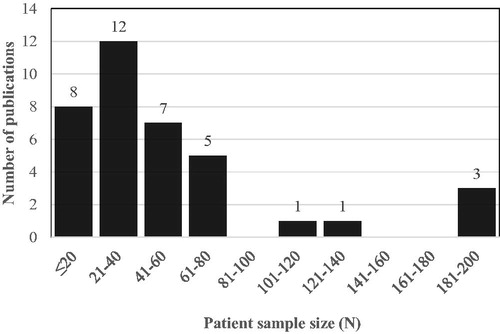Figures & data
Table 1. Main study characteristics.
Table 2. Results by the comparison group.



